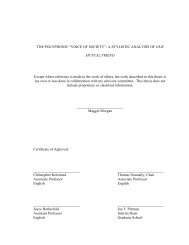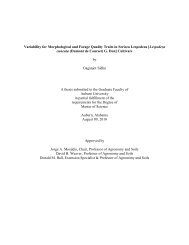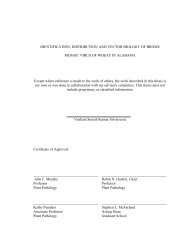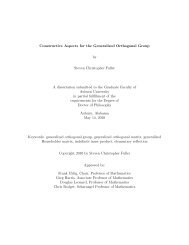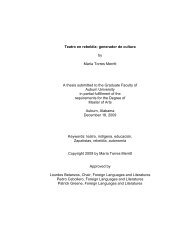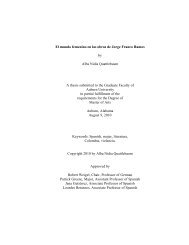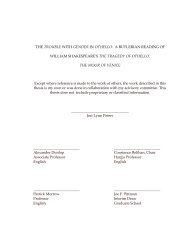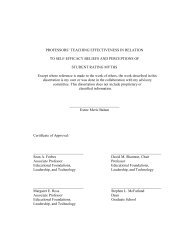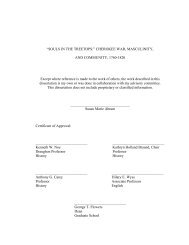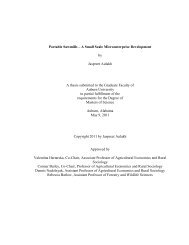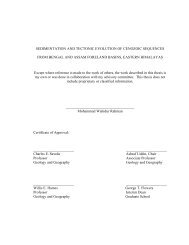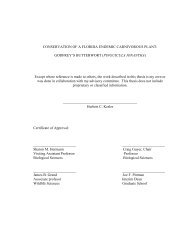Enhanced Polymer Passivation Layer for Wafer Level Chip Scale ...
Enhanced Polymer Passivation Layer for Wafer Level Chip Scale ...
Enhanced Polymer Passivation Layer for Wafer Level Chip Scale ...
Create successful ePaper yourself
Turn your PDF publications into a flip-book with our unique Google optimized e-Paper software.
strain rate sensitivity. The evolution equation describes the strain hardening or softening of the<br />
material:<br />
a ds d<br />
o B <br />
p<br />
hoB <br />
dt B <br />
dt<br />
(5-2)<br />
o 1 *<br />
S<br />
B (5-3)<br />
S<br />
dp <br />
dt Q <br />
exp<br />
<br />
A kT <br />
<br />
* <br />
S S<br />
represented steady state creep behavior by a double power law model as equation (5) shown<br />
101<br />
n<br />
(5-4)<br />
where ho is the hardening/softening constant, a is the strain rate sensitivity of hardening/softening,<br />
the quantity s* represents a saturation value of de<strong>for</strong>mation resistance, sˆ is a coefficient <strong>for</strong><br />
de<strong>for</strong>mation resistance saturation value, and n is the strain rate sensitivity <strong>for</strong> s saturation.<br />
Anand’s model has been shown to provide reasonable results when compared to a combination<br />
of plasticity and creep model [Tunga et al, 2002]. It has been used in the ANSYS program as the<br />
standard option to describe viscoplastic elements. Nine material parameters (A, Q, m, n, ξ, sˆ, a,<br />
ho, and so,) need to be determined to model the material behavior of solder.<br />
Creep Model: The elastic-creep model (Creep) incorporates the creep effect on solder<br />
material and all inelastic de<strong>for</strong>mation is induced by creep phenomena.<br />
Wiese et al. [92] studied the creep behavior of flip chip solder joint samples with<br />
Sn4.0Ag0.5Cu solder and the bulk solder specimen sample (a dog-hone type specimen), PCB<br />
specimen sample (copper wire soldered into a printed circuit board). They identified two<br />
mechanisms <strong>for</strong> steady state creep de<strong>for</strong>mation <strong>for</strong> the bulk and PCB samples, and attributed<br />
these to low stress (climb controlled) and high stress (combined glide/climb) mechanisms. They




